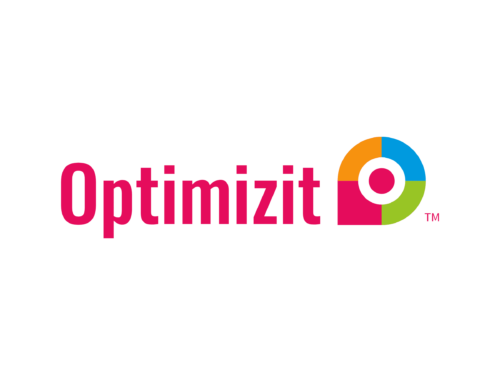Content marketing plays a vital role in connecting with audiences and building a brand’s presence online. However, even the most well-intentioned strategies can go awry if not executed carefully. Many businesses, while eager to share their message, fall into common traps that can hinder their success and growth.
To create impactful content, understanding your audience is crucial. Recognizing who they are, what they like, and how they engage with content can make all the difference. From designing targeted campaigns to selecting the right platforms, knowing the audience guides every decision, ensuring your message resonates and reaches the right people.
Another key factor is incorporating a well-planned SEO strategy. Without it, your content may not be seen by as many people as possible. It’s about making sure that your website and content appear in search results, so people can find you easily. Additionally, consistency in content creation and leveraging feedback through analytics will not only help maintain your audience’s interest but also refine your overall approach. Addressing these aspects helps avoid common pitfalls, setting a strong foundation for successful content marketing.
Skipping Audience Research
Knowing your audience is a cornerstone of any successful content marketing strategy. Without this knowledge, it’s easy to miss the mark, resulting in content that doesn’t resonate and fails to engage. Understanding your audience allows you to tailor your content to meet their needs and interests, which can significantly enhance engagement and conversion rates.
To identify and analyze your target audience effectively, start with demographic data. Gather information such as age, gender, location, and more. This helps in creating a profile of your typical audience member. Additionally, psychographic data such as interests, values, and lifestyle choices provide a deeper insight into what drives your audience.
Here are steps to help you effectively understand and engage your audience:
1. Surveys and Polls: Conduct these to gather direct feedback on what content your audience enjoys or needs.
2. Social Media Monitoring: Observe conversations your audience engages in online to understand their pain points and preferences.
3. Analyze Competitors: Look at who is engaging with your competitors. What are their interests? How do they interact with that content?
4. Create Personas: Develop detailed profiles of potential customers to guide content decisions.
Understanding these elements helps create content that not only attracts attention but also builds a lasting connection with your audience.
Neglecting SEO Strategy in Content
SEO, or Search Engine Optimization, is crucial for ensuring that your content gets found online. When a piece of content is optimized well, it’s easier for search engines to recognize its relevance and rank it higher in search results. Neglecting SEO can lead to your content being buried in search engine results pages (SERPs), reducing your visibility.
The role of SEO in content marketing goes beyond keyword stuffing. It’s about understanding how search algorithms work and applying best practices that enhance the user experience. For instance, optimizing page load times, ensuring mobile-friendliness, and structuring content with headings all contribute to improved SEO.
Common SEO mistakes can diminish your content’s impact. These include overlooking meta descriptions, failing to use alt text for images, and ignoring internal linking. To avoid these pitfalls:
1. Conduct Keyword Research: Use tools to identify relevant keywords and incorporate them naturally into your content.
2. Optimize Meta Tags: Write clear, keyword-rich meta titles and descriptions for every page.
3. Use Header Tags Appropriately: Organize content with header tags (H1, H2, etc.) for better readability and SEO.
4. Leverage Internal Links: Link to other relevant pages within your site to improve navigation and SEO juice.
By implementing a solid SEO strategy, your content will more likely reach your target audience, enhancing visibility and ultimately driving more traffic to your site.
Creating Inconsistent Content
Consistency plays a crucial role in content marketing. Regular posting keeps your audience engaged and your brand fresh in their minds. Inconsistent content can confuse your audience and may lead them to lose interest. If they don’t know when to expect new content, they might stop checking altogether.
A consistent content calendar helps maintain frequency and quality. It ensures that you plan your content around relevant topics and publish it regularly. To avoid falling into the trap of inconsistency, start by setting achievable goals for content production, considering your team’s capacity and resources.
Here are some tips for developing a consistent content calendar:
1. Plan Ahead: Use a calendar tool to outline your content strategy months in advance.
2. Set Realistic Schedules: Publish content at a frequency your team can maintain without quality suffering.
3. Vary Content Types: Mix up formats like blogs, videos, and infographics to keep your audience engaged.
4. Monitor Engagement: Track which topics or formats work best so that you can focus on those that drive more interest.
Maintaining consistency helps build trust and keeps your audience coming back for more, reinforcing your brand’s authority and reliability.
Ignoring Analytics and Feedback
Analytics are a content marketer’s best friend. They provide insights into how your content is performing and show you what works and what doesn’t. Ignoring these valuable insights leaves you flying blind. Without them, it’s hard to know if you’re reaching your goals or if your content is resonating with your audience.
Tracking content performance involves keeping an eye on metrics like page views, time spent on page, and conversion rates. This data helps you understand your audience’s behavior and preferences, guiding future content creation efforts.
To use analytics and feedback effectively:
1. Regularly Review Metrics: Keep tabs on important metrics like traffic sources, bounce rates, and user engagement.
2. Capture User Feedback: Encourage comments and read reviews to learn what your audience thinks about your content.
3. A/B Testing: Experiment with different approaches to see what resonates best with your audience.
4. Adapt and Optimize: Use gathered data to tweak your strategies, ensuring content remains relevant and engaging.
By paying attention to analytics and feedback, you refine your strategy, improve content quality, and deepen your connection with your audience.
Conclusion
Navigating the world of content marketing requires diligence and adaptability. Recognizing common pitfalls like skipping audience research, neglecting SEO, inconsistent posting, and ignoring analytics allows businesses to avoid these traps. Addressing these areas head-on significantly enhances your content marketing efforts, driving positive outcomes in engagement and reach.
Effective content marketing isn’t a one-time task but a continuous cycle of planning, executing, monitoring, and adjusting. By committing to understanding your audience, integrating SEO best practices, ensuring consistency, and leveraging analytical insights, your content will not only meet but exceed expectations.
Ready to take your content marketing to the next level? Optimizit is here to guide you. Our expertise in content marketing and SEO services is designed to amplify your brand’s online presence. With our help, you can craft strategies that resonate with your audience and deliver the visibility your business deserves. Reach out to Optimizit and enhance your digital content marketing strategy today.

